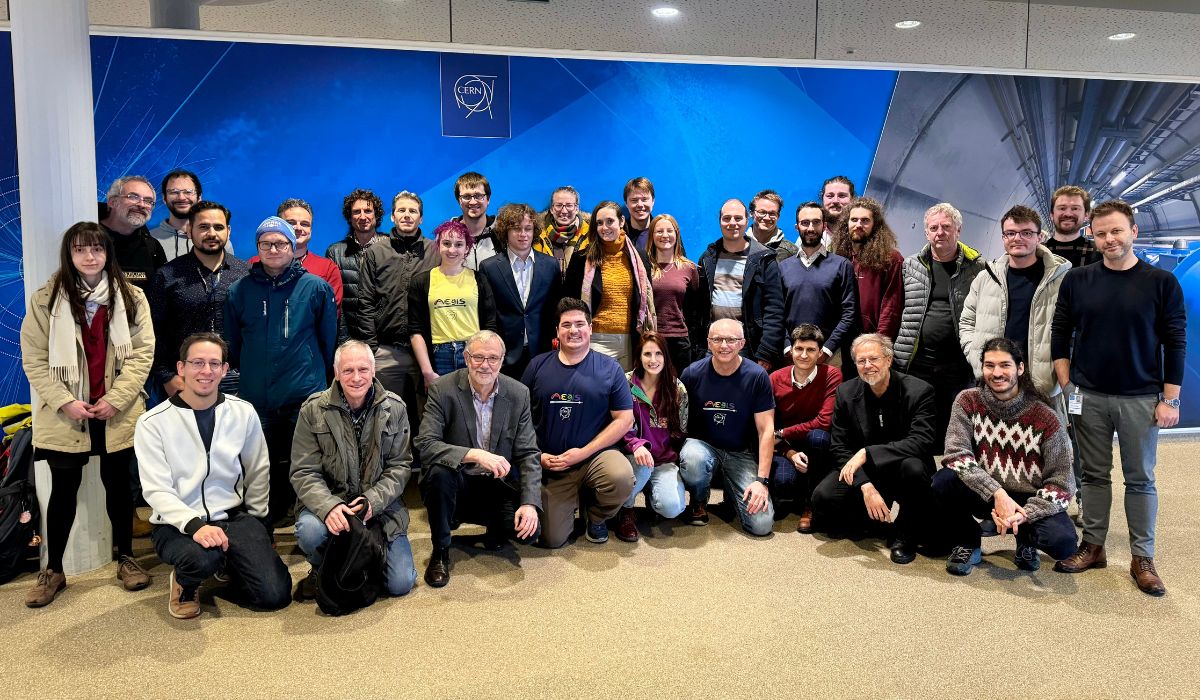
An experiment titled Antihydrogen Experiment: Gravity, Interferometry, Spectroscopy (AEgIS) conducted by the European Organization for Nuclear Research CERN has yielded significant scientific achievements in the field of anti-body physics research – for the first time, it was possible to cool positronium employing a laser. This achievement paves the way for further research that would enable scientists to study the fundamental building blocks of the universe in unprecedented ways. Physicists from several European countries, including researchers from the Laser Centre of the University of Latvia (UL), as well as India, are involved in the experiment.
Positronium (Ps) is an atomic system with an unusual composition consisting of an electron and a positron, the antielectron equivalent. The composition of matter and antimatter in equal parts distinguishes positronium from atomic systems such as antihydrogen, where the antimatter makes up a tiny fraction of the total mass, given that most of it is formed as a result of energetic interactions inside the nucleus. Positronium, a volatile combination of electrons and their antibody twin, the positron, is a particularly tough nut to crack for research, because of its short-lived existence. Namely, these particles destroy each other within a few hundred nanoseconds. Given the sheer speed, conducting experiments in the field of antibody physics has long been a challenge.
“After more than thirty years of efforts in the positronium research community, the CERN AEgIS experiment, wherein the UL Laser Centre is one of the partners, has achieved the first experimental demonstration. As a result, positronium has been successfully cooled using a broadband laser, constituting an innovative method. The method is based on the transfer of a pulse of tailored laser light to positronium atoms. This revolutionary experiment was performed in an environment free from magnetic and electric fields. The main laser is a broadband, long-pulsed 243 nm alexandrite laser capable of saturating the 1S-2P triplet transition of positronium. As a result, the temperature of the positronium cloud decreased significantly from 380 K to 170 K, which marked a significant progress in researchers’ understanding of antimatter and the possibilities of its manipulation,” explains UL Professor Mārcis Auziņš.
The significance of this achievement extends beyond the experimental realm. Reducing the speed, which in physics is synonymous with reducing the temperature, facilitates more accurate measurements, but moreover, stabilizes atoms to be manipulated. This cooling method not only enhances the efforts of AegIS to create antihydrogen, but also opens up opportunities for precise experiments in quantum electrodynamics (QED) and the equivalence principle (EP) for positronium groups worldwide. It enables beamforming, inertial testing and studies of Bose-Einstein condensation with positronium.
The success of laser cooling of positronium represents a leap forward in providing scientists with the tools to explore as yet uncharted territories. This discovery opens up possibilities such as stimulated annihilation and the generation of coherent gamma-ray bursts. The experiment just carried out opens the way to new knowledge and discoveries about the antimatter, one of the greatest mysteries of the universe.
Physicists from several European countries, as well as India are involved in AEgIS as cooperation partners – Switzerland, Italy, Poland, United Kingdom, Norway, Germany, Austria, Czech Republic, Latvia, India. Latvia is represented by the researchers of the UL Laser Centre – UL Professor Mārcis Auziņš and physics doctoral student Valts Krūmiņš.
The scientific article about the impressive experiment, published in the prestigious journal Physical Review Letters, can be read at https://doi.org/10.1103/PhysRevLett.132.083402, whereas the popular science rendering can be found in the journal Physics at https://physics.aps.org/articles/v17/s23
The Laser Centre is a structural unit of the UL Faculty of Physics, Mathematics and Optometry, implementing active research programmes in atomic physics, molecular spectroscopy, physics and applications of nitrogen vacancy (NV) centres, as well as observational astronomy.
Four laboratories operate in the UL FPMO Laser Centre: Atomic and Molecular Physics Laboratory, Molecule Optical Polarization Laboratory, Colour Centre Laboratory (NV in Diamond), Laboratory of Colour Centres, Laboratory of Astrospectroscopy.

 Academic Centre
Academic Centre